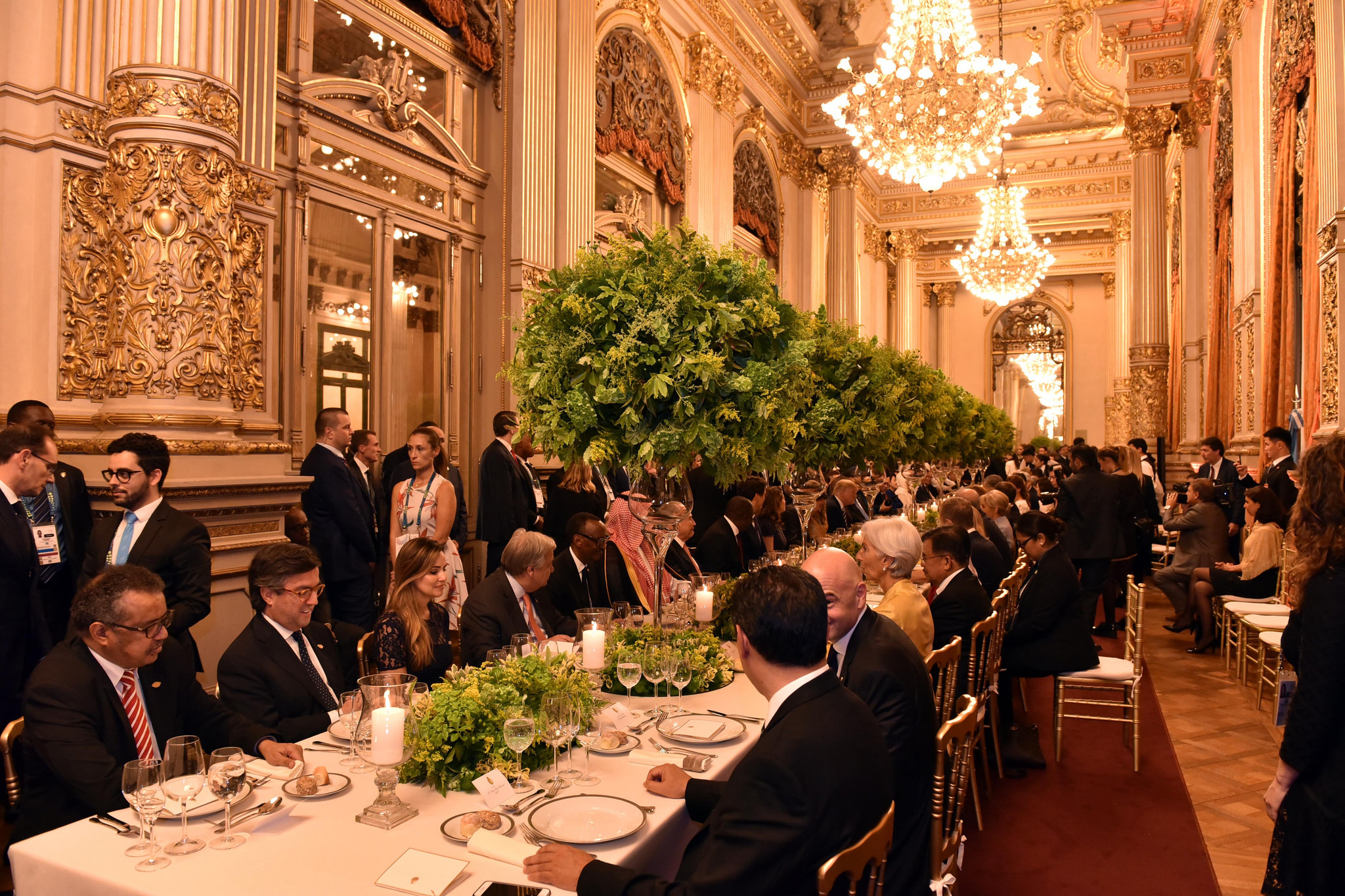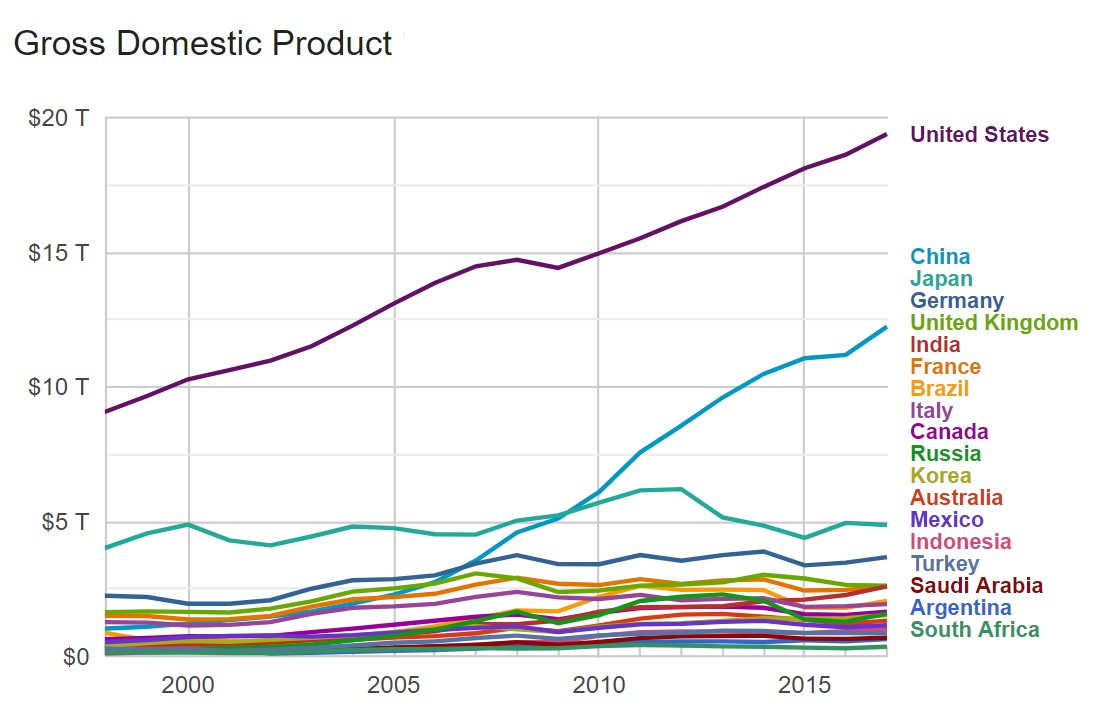The big news from the G20 meeting that just closed in Buenos Aires is the 90-day truce in the U.S.-China trade war that has rattled financial markets and threatened global growth. The smaller news is that Trump did not pull the rug under this meeting the way he had done at the last G7 meeting in Canada.
The prospect of a no-statement Summit similar to the G7 debacle had looked very real. As it turned out, the show was very different from what everyone expected, largely thanks to the strong action of French diplomacy, spurred by Macron who wanted a G20 summit statement on his favorite issues, climate change, globalization and growth. But the G20 meeting confirmed the previous G20 in Germany (July 2017): American isolationism is back.
To understand what happened, it helps to take a step back and consider what the G20 is really all about – just like the G7, acting at the margin of the United Nations.
The G20, born of a G7 meeting of finance ministers and central bankers in 1999, is made up of the world’s 19 most important countries in terms of their GDP, plus the European Union. The two giant state members are the United States ($19.39 trillion) and China ($12.24 trillion). Since the G20 was founded, both superpowers have distanced themselves from the pack as most countries’ GDP flat-lined:
In the diagram: Evolution of G20 Member countries Gross Domestic Product since foundation of G20 (1999) Source: Data from World Bank Last updated: Jul 6, 2018 ©2014 Google
In spite of the limitations of GDP as an indicator (it doesn’t capture social progress),the diagram is a striking depiction of the varying impacts of globalization, with the U.S. and China the big winners, at the expense of the rest of the world. And it shows clearly how the U.S., contrary to what Trump says, has always been “great” with the 2008 Big Recession a mere blip on its growth rate.
And it didn’t help that Europe (as a region) showed up in disarray at the meeting: The UK struggling with Brexit and not getting the expected support from Trump; Russia embroiled in an escalating fight with Ukraine; Merkel on her way out and rumored to be aiming for the presidency of the European Council; Macron battling yellow vests protests that are now in their third week and devastated Paris last Saturday.
That leaves on the international scene the two superpowers, the US and China. Some even talk of the emergence of a G2. In a sense, when Trump dined with Xi and crafted a truce in their trade war, that was a G2 meeting.
But if one of the superpower – in this case, Trump’s America – chooses to isolate itself with trade wars and its America First agenda, then China is left free to interact with the rest of the world. Which is precisely what happened. Let’s take a closer look.
The US-China 90-Day Trade Truce
After a two-hour dinner on Saturday night, Trump and Xi Jinping agreed to a “deal”, whereby Trump would hold off on his plan to raise tariffs on Jan. 1 to 25 percent on $200 billion in Chinese goods and the Chinese would buy a “not yet agreed upon, but very substantial amount of agricultural, energy, industrial” and other products from the United States to reduce America’s “huge trade deficit with China”, the White House said. To be clear, the 25 percent raise would have applied to the $200 billion on which Trump has already imposed a 10 percent import tax (there’s another $50 billion on which the Chinese are already taxed 25%).
Trump left Argentina without giving a press conference, deferring until after the funeral of former President George H.W. Bush “out of respect for the Bush family” as he explained in a tweet. Aboard Air Force One, he talked about the U.S.-China trade truce, saying in his usual hyperbolic style, “it’s an incredible deal. What I’ll be doing is holding back on tariffs. China will be opening up, China will be getting rid of tariffs. China will be buying massive amounts of products from us.”
When he got back in Washington he tweeted triumphantly that China would cut its auto tariffs, but so far this has not been confirmed by Beijing (December 4 update).
Perhaps two of the most important gains of this “deal”:
- the Chinese, whose laboratories produce vast amounts of fentanyl, the synthetic opioid at the root of the tragic opioid crisis in America, finally agreed to label fentanyl a controlled substance; this is huge: fentanyl is considered to be fifty times more powerful than heroin;
- within the framework of the strategic “5G race” between the U.S., China and Europe (the battle for the next generation of wireless data network for mobile phones and other devices) Beijing agreed to reconsider a takeover by U.S. chipmaker Qualcomm of its proposed $44 billion acquisition of NXP Semiconductors NV (NXPI.O) that it had previously blocked; Qualcomm is a key player in the development of 5G technology, engaged in an uncomfortable “balancing act”, straddling all three markets (U.S., China, Europe).
Now the two countries have 90 days to resolve their differences over Beijing’s tech policies. If they can’t, the higher U.S. tariffs will go into effect on the $200 billion in Chinese imports.
American Isolationism is Back
For Trump, the G20 show was only about two things: (1) signing the new trade “deal” with Canada and Mexico, the USMCA that replaces NAFTA and (2) his dinner with Chinese leader Xi-Jinping. Little else mattered, as his twitter stream shows:
#USMCA https://t.co/7CYsYBYbd1
— Donald J. Trump (@realDonaldTrump) November 30, 2018
In his next tweet, he called it one of the “the most important, and largest, Trade Deals in U.S. and World History” (sic, with capital letters) , overlooking the fact that it concerns only three countries:
Just signed one of the most important, and largest, Trade Deals in U.S. and World History. The United States, Mexico and Canada worked so well together in crafting this great document. The terrible NAFTA will soon be gone. The USMCA will be fantastic for all!
— Donald J. Trump (@realDonaldTrump) November 30, 2018
And to nail it deep into the twitter diplomatic wall, Trump retweeted Argentina President’s tweet about the USMCA signing.
For the rest of the meeting, remarkably enough, there were no tweets about any of the leaders he met or avoided meeting – he declined to meet Putin. There were only retweets, a form of second-hand acknowledgement of events.
He retweeted one from the Office of the South Korean President Moon Jae-in that itself had retweeted Dan Scavino’s tweet about Trump meeting Moon. And he retweeted another of Japanese leader Abe reporting on the “trilateral” meeting with President Modi of India:
アルゼンチンでG20サミットが開幕しました。この機会を活かし、トランプ大統領、モディ首相と、初めてとなる日米印三か国による首脳会談を行いました。「自由で開かれたインド太平洋」という共通の目標に向かって、緊密に連携していくことで一致しました。 pic.twitter.com/Hp9qnWubFH
— 安倍晋三 (@AbeShinzo) November 30, 2018
Nothing else. That was the extent of Trump’s diplomacy. Leaving a vacuum regarding the G20 summit final statement that was quickly filled by Europe.
The G-20 Summit Statement: Focus on multilateralism and climate agreement
Even before the meeting started on November 30, the French TV network France 24 had reported that “European diplomats” were scrambling to put together a common statement on the Paris Climate Agreement, international trade and the WTO. The killing of dissident Saudi journalist Jamal Khashoggi and the Saudi war in Yemen were also on everybody’s minds, and U.K. Prime Minister May, two days before flying to Buenos Aires, had vowed to “speak to Saudi Prince” about it.
It wasn’t easy. President Mauricio Macri of Argentina, the host country, in opening the Summit on 30 November tried to recenter the meeting on its agenda, saying they would “address a people-centred agenda with a vision of the future”. All this had nothing to do with Trump’s supposed “four crises” that the international press had predicted would shape the G20 summit: his trade wars; Putin’s power play; tense relations with the U.K. over Brexit and the mess in the Middle East. Everyone expected a Trump-centered agenda that, in fact, did not happen.
In the event, China and France got together and agreed to strengthen the Paris Climate Change Accord further, in view of the COP24 meeting in Katowice, Poland, starting today, on 2 December. However, Trump’s America is not out of the picture: The final communiqué when mentioning trade is remarkable in what it avoids saying: protectionism is not condemned (see point 4). This gives carte blanche to Trump to continue to dismantle the international trade system with his trade wars (Read the full statement here).
Still, the G20 Summit Statement confirms a real “commitment for rule-based multilateralism” from “the G19 minus the United States” (see point 5). The commitment, as Macron took some pain to make clear in his press conference, is to set new rules and increase cooperation on major key issues, notably regarding climate change, re-energizing all initiatives; international trade and the necessary “modernization” of the World Trade Organization (meaning reform); global partnership for education, particularly of women and girls.
The important things to note here is that (1) Europe “has been heard”, as Macron says, for the first time using a unified diplomatic approach, defending its interests, especially in the climate area; and (2) America hasn’t objected. It is not actively participating, but at least it’s not trying to stop others from working together.









